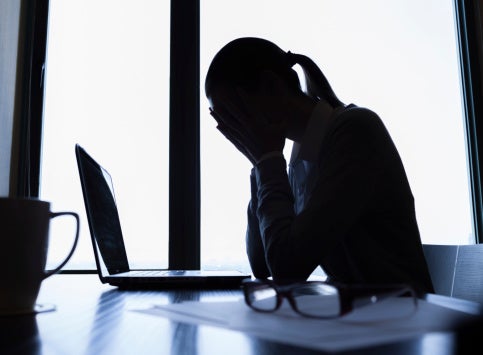
By: Dr. Chloe Carmichael
With all the issues facing our world today, I’ve had more clients than ever before seeking help to manage stress from things like terrorism, police shootings, or other acts of violence. I applaud people who are able to recognize this stress and want to face it in a constructive and healthy way. It takes a lot of courage to be vulnerable and share that current events are making you feel anxious, angry, or confused. Recognizing this also empowers you to take healthy, appropriate action. Taking healthy, appropriate action not only makes the world a better place, it’s also good for your mental health and well-being.
[Related: It’s Important to Use Your Voice Now]
The CARE System below is something I created to guide you through 4 important steps: Consider, Act, Reflect, and Ease yourself forward in a healthy, conscious manner.
1. Consider
The first step is to allow yourself to really consider the situation that you’re facing, and how it makes you feel. This is an important step because many of us get stuck in denial or we try to avoid our feelings. Feelings are actually important information, and we don’t want to miss them. For example, if thinking about an act of terrorism that has occurred, you might notice that it makes you feel anxious – or you might notice it makes you feel angry – or you might even notice you feel both anger and anxiety. Anger is an important emotion because it cues us that we’re experiencing injustice. Anxiety, on the other hand, is an important emotion because it cues us that we may need to take steps to help keep ourselves safe. No matter what you’re feeling, an essential first step is to consider the situation that you’re facing and be honest with yourself about how it’s making you feel.
2. Act
Once you have an idea of how a situation is making you feel, you will be better prepared to choose what type of action is healthy and appropriate. For example, if you were feeling anxiety over fears of a local terror attack, you might consider healthy and appropriate actions like creating a safety plan to connect with family and loved ones in the event of an emergency, or following the practical cautionary steps advised on the ads many New Yorkers have seen for a “go bag,” or whatever other type of steps you can take to demonstrate to yourself that you’re responding appropriately to anxiety.
If you’ve actually already done all the practical steps but you’re still just feeling jittery, a healthy and appropriate action might be to book yourself a soothing massage, practice yoga or deep breathing, or schedule a talk with a friend or therapist, or some other healthy and appropriate action that will help or manage feelings of anxiety. If you’re feeling anger, you might consider what healthy and appropriate action you can take to act on this important awareness of your feelings about injustice. This can be anything from attending a rally to volunteering for a politician who represents your views, writing letters of support to our troops or police, or even just joining a discussion group or book club through a place like Meetup.org that focuses on the issue at hand. Healthy and appropriate action will help you address your feelings in a proactive manner with a level of intensity that feels right for your situation and level of emotion.
3. Reflect
Once you have taken action, pause to notice how it has made you feel, and possibly how it has made others feel. If you donated your time or money to help people who were most directly affected by the issue at hand, how does it feel to think about the aid you gave? If you took the time to sign up for a discussion group or read a book about the issue, how do you feel about informing yourself? If you attended a rally, did it feel good to connect with others who share your view and make your feelings known publicly? Upon reflection, you may determine the action you took was positive– or reflection may guide you to realize that a different action is needed. Either way, congratulate yourself for taking the time to consider the situation and attempt to take appropriate action.
4. Ease
Now that you have considered, acted, and reflected, it may be time for you to ease into something else. After all, we do have other obligations and concerns in our lives, and we need to “give ourselves permission” to move forward with our day at some point. But only go to this when it feels right for you. If you decide during the Reflection phase that you really want to re-engage and take more action, or try a different course of action, then that may be the healthiest thing for you to do. The idea is to make sure you at least open to the idea that after consideration, action, and reflection, it may be the right time for you to ease forward with the rest of your day. Sometimes a healthy break actually gives us the perspective we need to think of more creative or effective actions to take in the future. You can always return to the beginning at Consideration again, anytime you feel the need.
Watch Dr. Chloe speak about this subject here.
This article previously appeared on DrChloe.com.
―
Chloe Carmichael, Ph.D. is a licensed clinical psychologist, known as Dr. Chloe, who heads a successful private practice with multiple offices in New York City that focuses primarily on relationship issues and stress management as well as career coaching. Serving more than 1,000 patients in Manhattan, Carmichael leverages technology with psychology to expand her counseling services across the country through online private and group sessions.
Ellevate Network is a global women’s network: the essential resource for professional women who create, inspire and lead. Together, we #InvestInWomen.